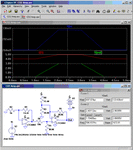Quantum Flux
Newbie level 4

I have been given a project for which I must use an ADC and other things. The ADC accepts 0-3VDC.
I have decided a co2 sensor will supply my analog signal. It needs 6v for a heating element and it supplies a signal of the range 30-50mV depending on c02 level. This must go through a buffer amp of course.
I'm trying to figure out how to make a circuit that would effectively adjust this range so I ultimately get 0-3V.
Can anyone point me in the right direction?
I have decided a co2 sensor will supply my analog signal. It needs 6v for a heating element and it supplies a signal of the range 30-50mV depending on c02 level. This must go through a buffer amp of course.
I'm trying to figure out how to make a circuit that would effectively adjust this range so I ultimately get 0-3V.
Can anyone point me in the right direction?






